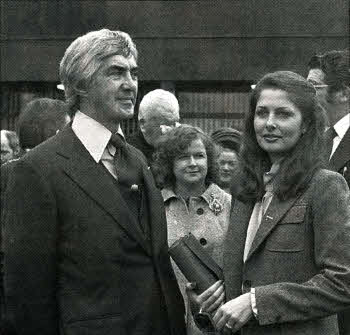Concerns about viability of De Lorean Motor Company and Maze issue disclosed in 1979 government files
 GROWING British government concern at the viability of
the De Lorean Motor Company, which was about to begin production in Dunmurry
and the issue of whether armed sentries at the Maze Prison could open" fire
on escaping prisoners, have been disclosed in classified government files.
GROWING British government concern at the viability of
the De Lorean Motor Company, which was about to begin production in Dunmurry
and the issue of whether armed sentries at the Maze Prison could open" fire
on escaping prisoners, have been disclosed in classified government files.
The prison was at the centre of the H Block 'dirty protest' in the late 1970s, and jail authorities had no doubt that armed guards were "the decisive psychological factor in deterring a mass escape", adding that the inmates were impressed by the precedent set by the shooting dead of two men by soldiers during previous escape attempts.
However, at the time, Army GOC Sir Tim Creasey said the law allowed troops to use only "reasonable force" to apprehend escapees, a fact of which prisoners were "well aware".
He believed the inability of his troops to open fire was "very bad for morale". Ironically, as the debate continued, on March 31, 1978 three IRA Special Category prisoners, including 'Bik' McFarlane, attempted to escape from the Maze, disguised as prison officers but were captured. In a final letter on the file dated 25 April 1978, Sir Tim was informed the law on opening fire could not be changed because of "insurmountable practical and political difficulties".
The acrimonious debate helps to explain why, during the mass IRA break-out from the Maze in 1983, the military guard failed to fire on the escapers.
In August 1978 the Labour Government announced that the project to produce the stainless-steel, gull-winged De Lorean sports car would go ahead, with the Treasury providing £56m out of a total cost of £65m. JCB Lyttle of the Stormont Department of Commerce said at a meeting in New York, John De Lorean had raised the issue of a joint advertising strategy with the Northern Ireland government in order to showcase the province's engineering tradition.
The proposal did not impress Reg Browne of the Northern Ireland Development Agency in New York, who warned: "We have been the butt of some ridicule because of the massive speculative nature of the investment and my advice to the department would be that we should allow De Lorean to get on with his own campaign."
Mr De Lorean wrote to Dr George Quigley, a senior Stormont official, declaring that he had assembled "one of the finest teams in Europe" while the site and technical programme were "on target". However, he stressed the importance of a joint advertising campaign with the British government and De Lorean each contributing $5m to launch the car.
In his reply Dr Quigley expressed delight that the project was "moving ahead" but privately warned against the government becoming too closely identified with the De Lorean product before it had proven itself commercially.
The lingering suspicion surrounding the industrialist re-emerged under the new Conservative government in November 1979 when Stormont Commerce Minister Giles Shaw joined Mr and Mrs De Lorean for dinner in New York. At the meal, De Lorean surprised his guests by raising a totally new business proposal involving British government funding.
According to the report, "Mr Shaw made it clear to Mr De Lorean that while he would continue to defend the car project in the House, he and his colleagues were looking to Mr De Lorean to focus his energies on making a success of the project before the government considered supporting any other proposals from him."
The enterprise minister also ruled out a joint advertising campaign with the De Lorean Motor Company.
The De Lorean company went into receivership in February 1982 with the loss of 1,500 jobs in west Belfast.
Ulster Star
01/01/2010

